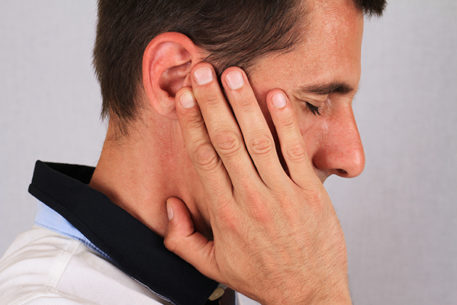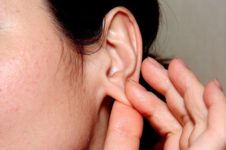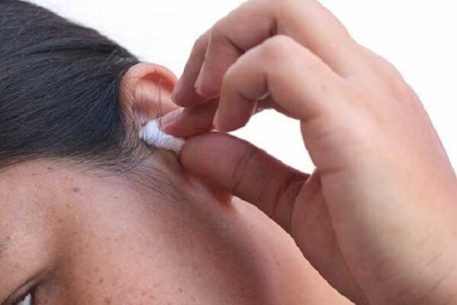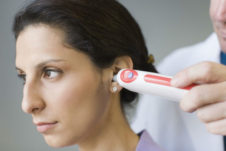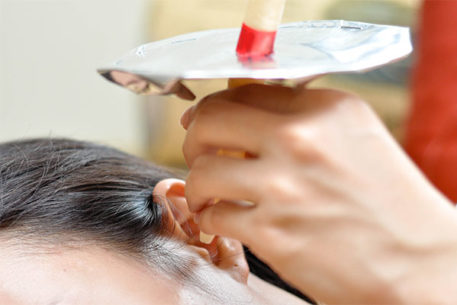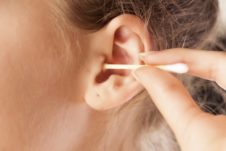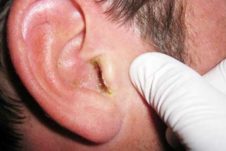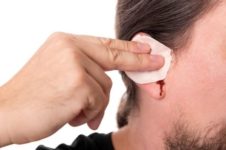If suddenly an ear is laid, but it does not hurt, even medical specialists do not always know what to do in such a situation. The fact is that ear congestion is a common symptom of various pathologies and before taking any therapeutic measures, it is necessary to establish the cause of the ailment.
Material Content:
Stuffed ear without pain: causes

Many people do not like to be treated and, unless absolutely necessary, take the time to visit a doctor. The absence of pain with ear congestion creates the illusion of the insignificance of the problem, which means that its solution does not need the help of doctors.
But doctors do not recommend ignoring this condition and insist on undergoing a diagnostic examination.
How does congestion occur?
Hearing organs in healthy people function as follows:
- sound waves are captured by the auricle;
- in the ear canal, sound vibrations move to the eardrum located between the outer and middle ear;
- then there is amplification and conversion of sound into electrical pulses.
A feeling of stuffiness in the ear is nothing more than a disturbance in the passage of sound to the auditory analyzer. This is possible in two situations - if there are obstacles in the way of the sound wave blocking its movement along the auditory canal, or when the perception of sound signals is disturbed by the eardrum.
A decrease in auditory sensitivity indicates the presence of barriers to the advancement of sound or the development of dysfunctions of sound-receiving organs.
Causing hearing loss
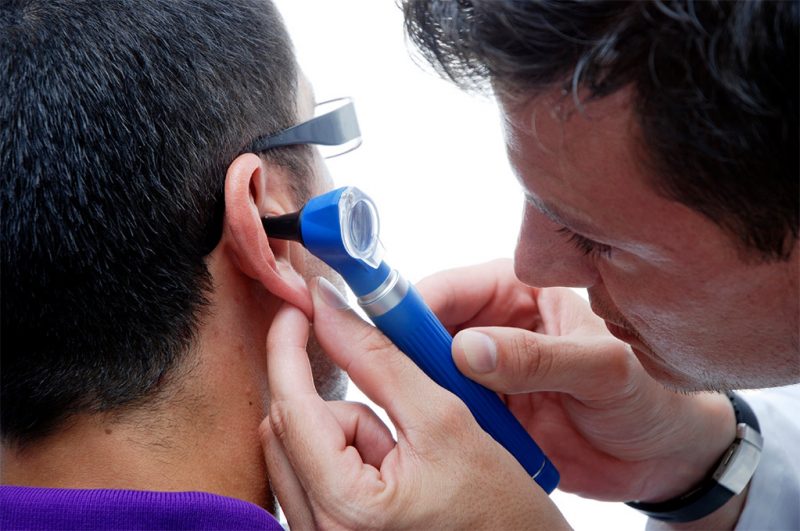
The reasons why the ear can be blocked, doctors are divided into natural and pathological.
Natural factors that cause obstruction of the auditory canal include:
- sulfuric plugs. Occur due to the accumulation of excess sulfur secretion in the ear canal;
- a sharp change in atmospheric pressure. Most often happens during air travel, when climbing to a high altitude or when diving under water;
- mucus penetrating the Eustachian tube with improper blowing of nose during rhinitis;
- getting into the ear canal of water, air or foreign objects.
As a rule, removing the cause of discomfort allows you to get rid of congestion to restore the natural level of hearing quickly and painlessly.
If the cause of the congestion lies in the development of any pathological processes, you can get rid of the problem only by treatment.
Among the most common causes of ear congestion:
- inflammatory processes. Accompanied by swelling of the soft tissues, overlapping the auditory canal;
- development of hearing loss due to pathological damage to the organs of the ear apparatus;
- inflammation affecting the mucous membranes of the tissues of the inner ear.
If your head hurts and puts your ears in, then this can be regarded as symptoms of diseases that are not related to the hearing organs - damage to nerve processes as a result of trauma, overgrowth of bone tissue, and the development of neoplasms.
In addition, congestion of the ear often occurs during pregnancy, most often in the second trimester.
This is due to hormonal changes in the body of the pregnant woman, which contribute to the accumulation of fluid in the tissues of the hearing aid and their edema.
What to do, stuffy ear, but it doesn't hurt
The discomfort that accompanies congestion in the ears forces a person to take measures to get rid of this problem.
With a cold, runny nose, otitis media, sinusitis
The development of colds is often accompanied by damage to the nasopharynx, which, in the absence of timely treatment, leads to inflammatory processes not only in the auditory, but also in other body systems. In this case, tinnitus or congestion can be observed without the appearance of pain.
It is possible to eliminate ear congestion in colds only after treatment of the underlying disease.
Here you can not do without the help of a qualified specialist, since a complex effect on the foci of inflammation is necessary:
- drops of a vasoconstrictor group;
- warming compresses - based on oil or alcohol;
- anti-inflammatory drops;
- antiviral drugs;
- special exercises that reduce pressure on the eardrum.
As additional measures, physiotherapeutic procedures are recommended - electrophoresis, laser treatment, amplipulse therapy.
After the pool, an ear was laid, what to do
Discomfort in the ear often occurs when water enters the ear canal after visiting the pool, washing your hair or bathing in the sea and body of water. Despite the fact that water does not cause visible health disorders of the ear, over time, exposure to moisture can lead to the development of catarrhal processes.
You can independently get rid of water in the ear in the following way:
- lie on your side with your sick ear down, pinch your nostrils and swallow a few times with your mouth closed;
- pull the earlobe, tilting your head to the side;
- make a sharp bend forward, keeping your feet shoulder width apart and straighten up just as sharply.
You can also put a small cotton swab in your ear so that it absorbs water.
At the same time, it is strictly forbidden to try to dry the liquid that has got into the ear with a hairdryer.
If the measures taken do not help, it is best to consult a doctor immediately.
Ear lays in an airplane

Air travel almost always causes stuffiness in the ear. To avoid discomfort, it is necessary to chew gum or suck lollipops, yawn, or simply open your mouth wide, simulating yawning, to massage the bulge behind the ear, located at the top line of the lobe, at the moment the aircraft rises to a height.
What to do with a stuffy ear due to sulfuric plug
Sulfur cork is formed from accumulations of natural secretion produced by the ear glands to lubricate the ear canal and protect against the effects of microorganisms. For various reasons, sulfur can accumulate and gradually clog the ear canal.
To remove the sulfuric plug, rinse the ear canal with water or saline. To facilitate the procedure, the sulfur plug is pre-softened with a few drops of hydrogen peroxide.
Best of all, the otolaryngologist will cope with this task.
The use of a cotton swab to remove the sulfuric plug is not recommended, as a method that helps seal sulfur deposits in the ear.
It is interesting:treatment of otitis media
At elevated pressure
If the ears are blocked at high pressure, you must lie down, take a sedative or a medicine prescribed by your doctor and call an ambulance. The use of other independent measures before the arrival of the doctor is not recommended.
When to see a doctor

It is not always possible to independently get rid of ear congestion, and in some cases, home treatment can lead to complications with the health of the hearing organs. If the cause of the ailment is unknown or other disturbing symptoms are observed, consult a doctor as soon as possible.
Symptoms of serious illness
A feeling of stuffiness in the ear is often observed in various diseases that are not related to the hearing organs.
Therefore, it is important to pay attention to such manifestations of pathological changes in the body in time:
- tinnitus;
- blood or pus flowing from the ear;
- severe dizziness, accompanied by vomiting;
- numbness of the limbs;
- impaired coordination of movements;
- bouts of irritability;
- temperature rise.
One or more of the aforementioned symptoms, manifested against the background of stuffy ears, may be signs of cardiovascular pathologies, hypertensive crisis, or serious inflammatory processes.
In such cases, a doctor's examination and special therapeutic measures are necessary.
What could be the danger?
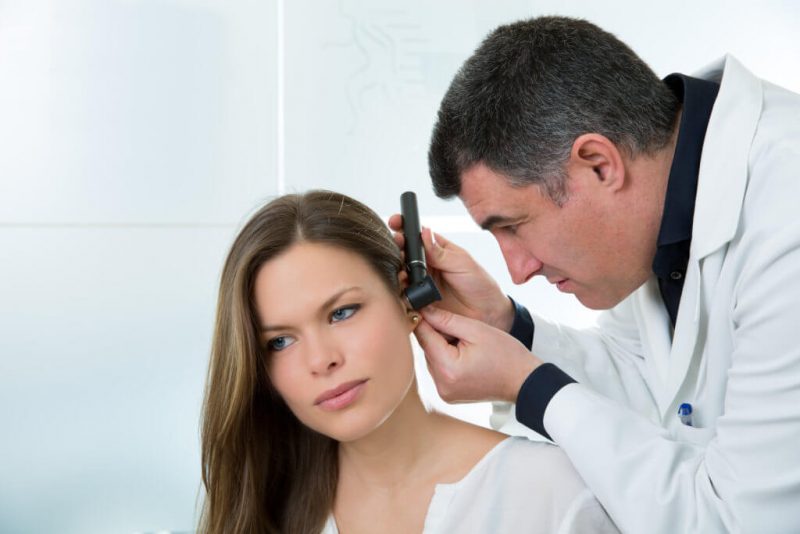
Lack of treatment or improperly taken measures with a stuffy ear can cause complications.
Among the possible consequences:
- hearing impairment or loss;
- problems with the vestibular apparatus - dizziness, loss of balance, changes in coordination of movements;
- chronic inflammatory processes in the nasopharynx;
- meningitis;
- trigeminal neuralgia;
- damage to the kidneys and urogenital sphere.
Do not underestimate the level of possible risk that arises if you ignore the treatment. Even the most harmless, at first glance, malaise can turn into complications, the elimination of which will take years of a once healthy and full life.


